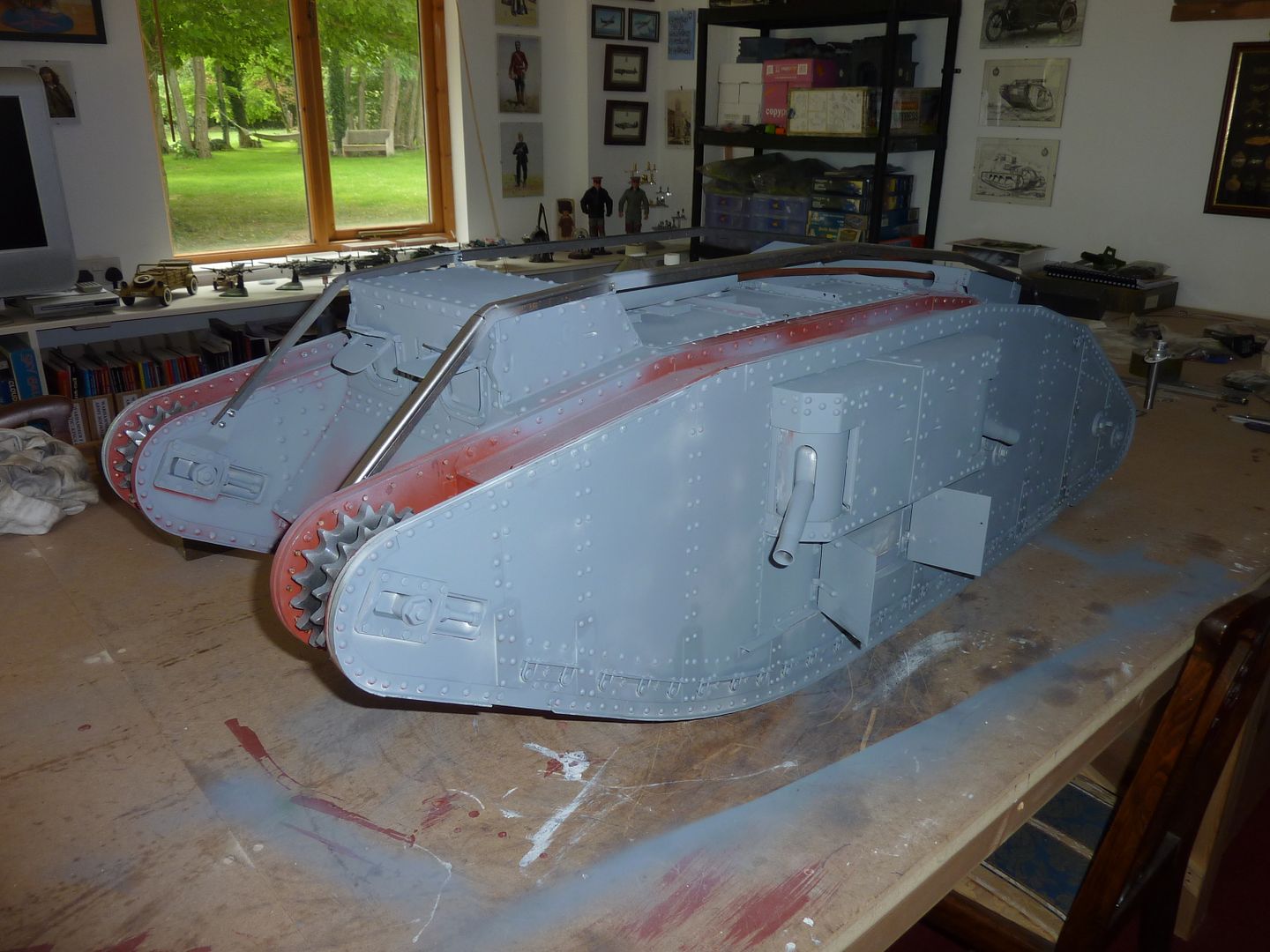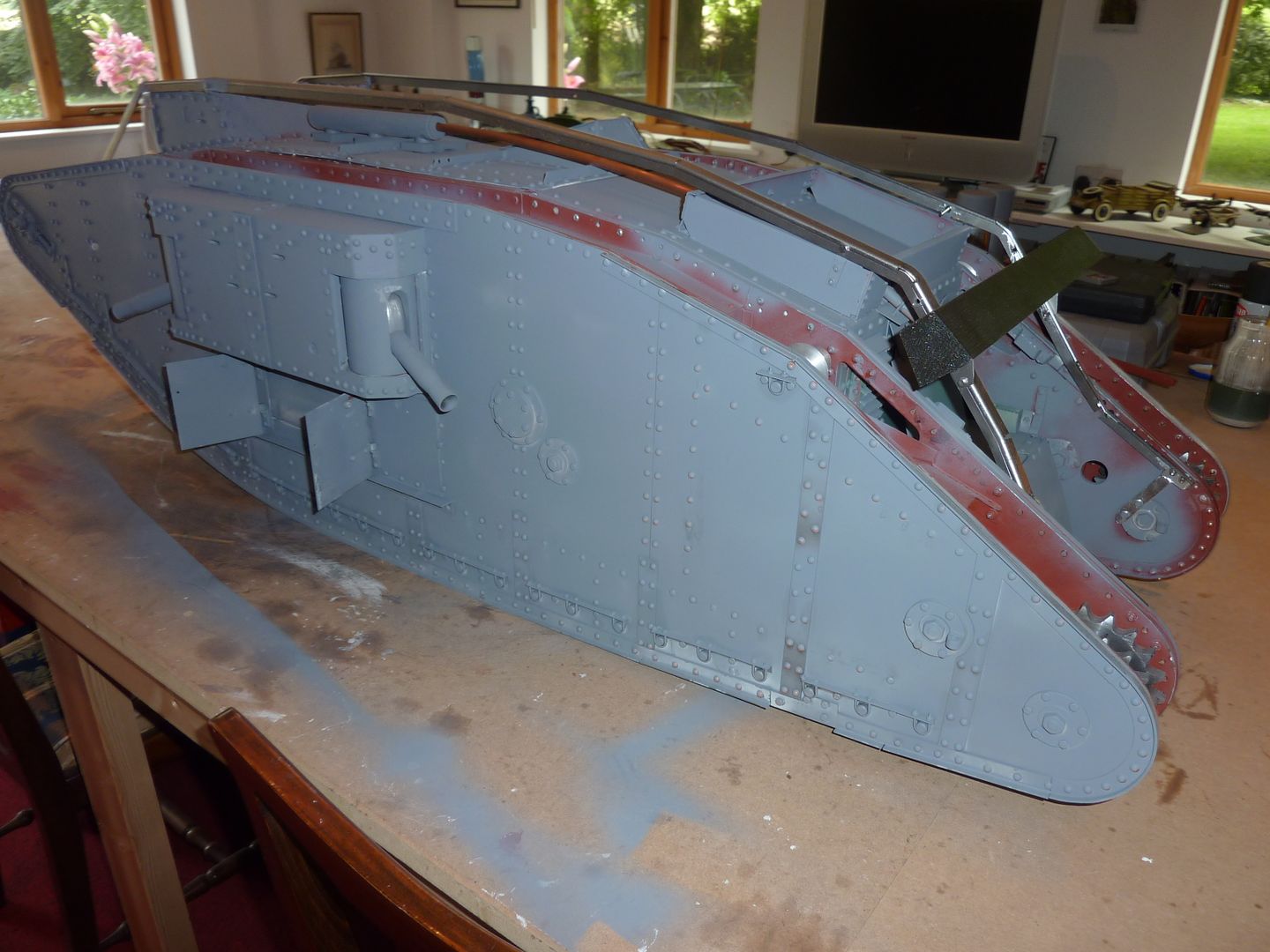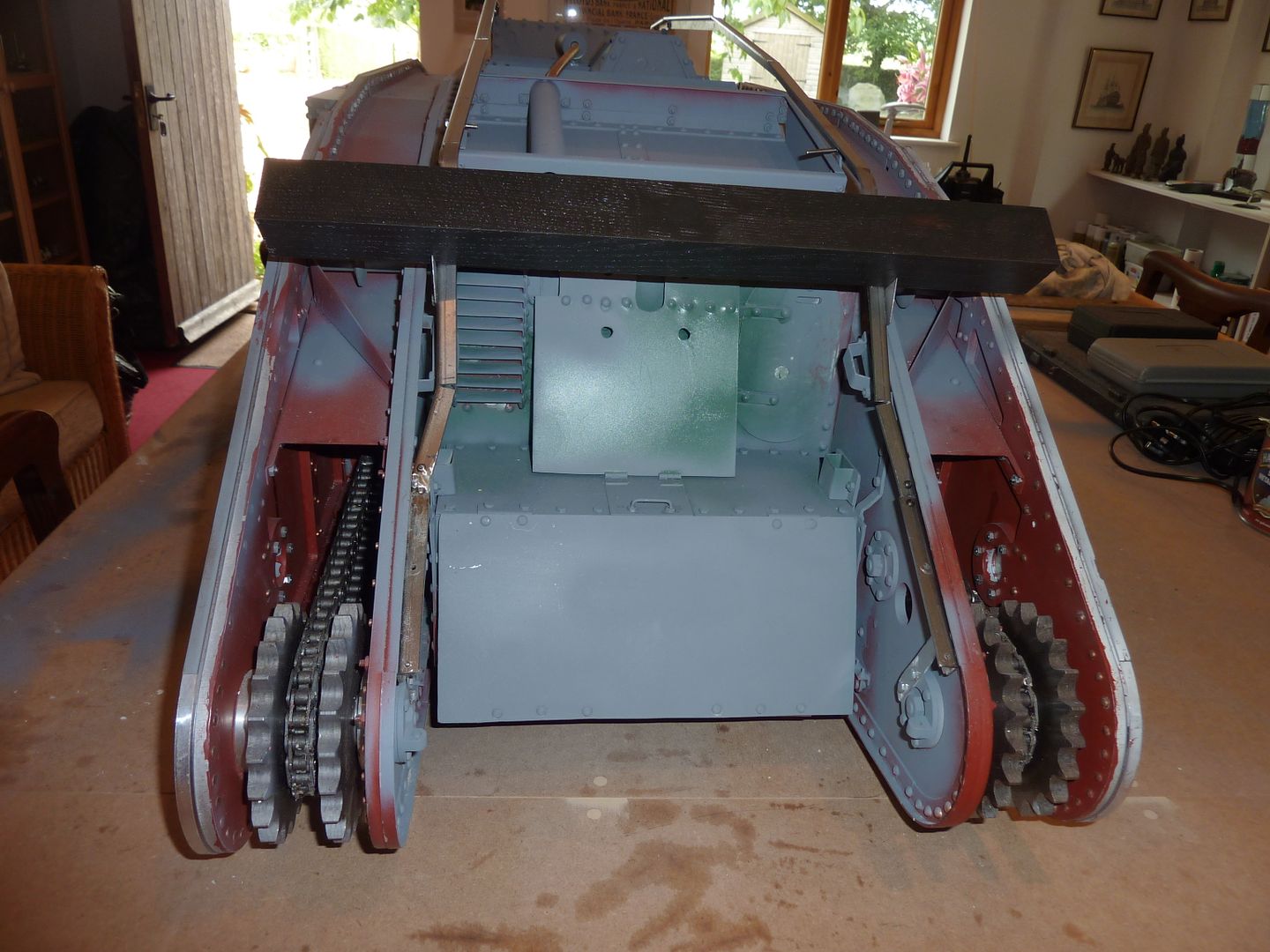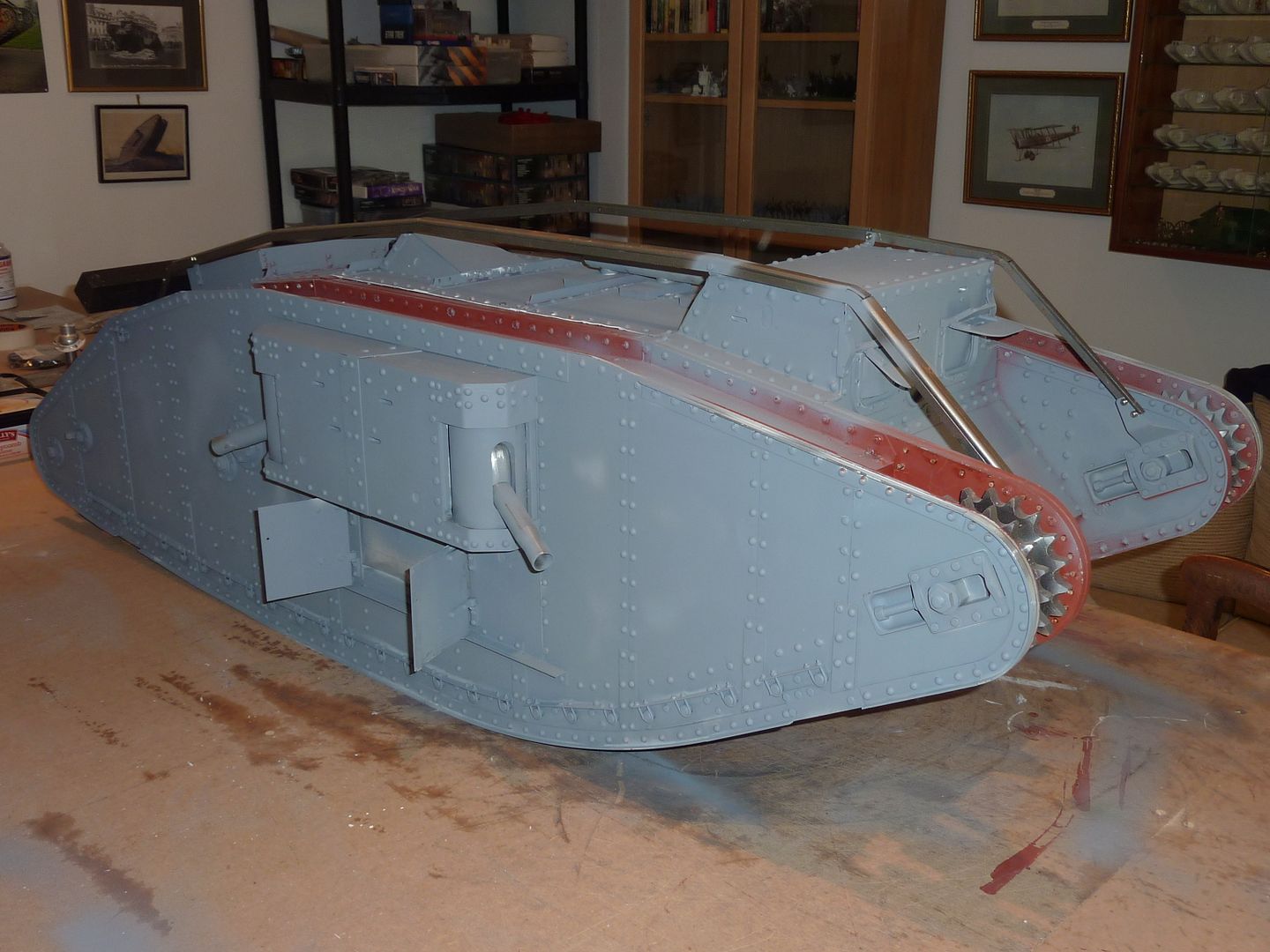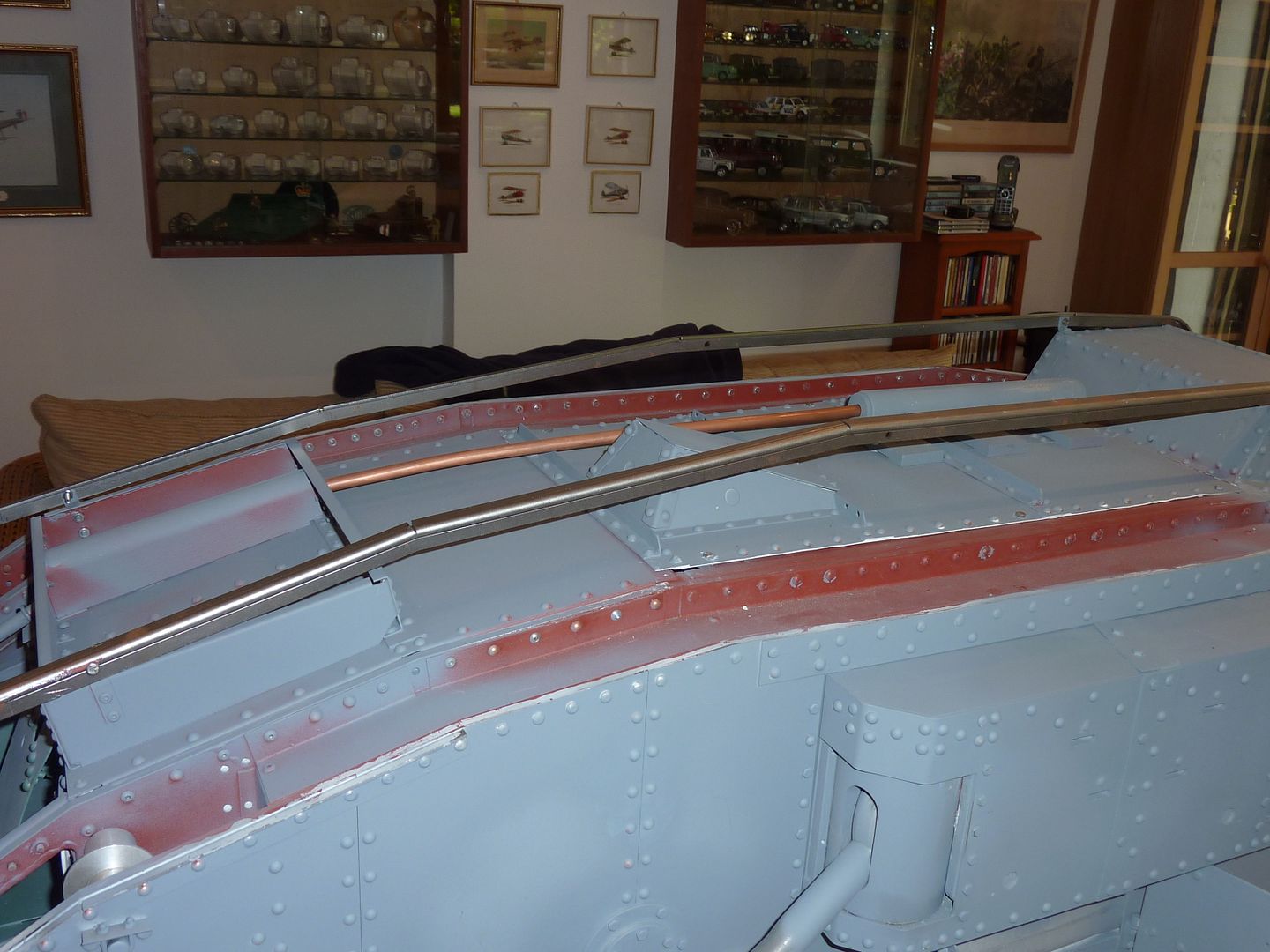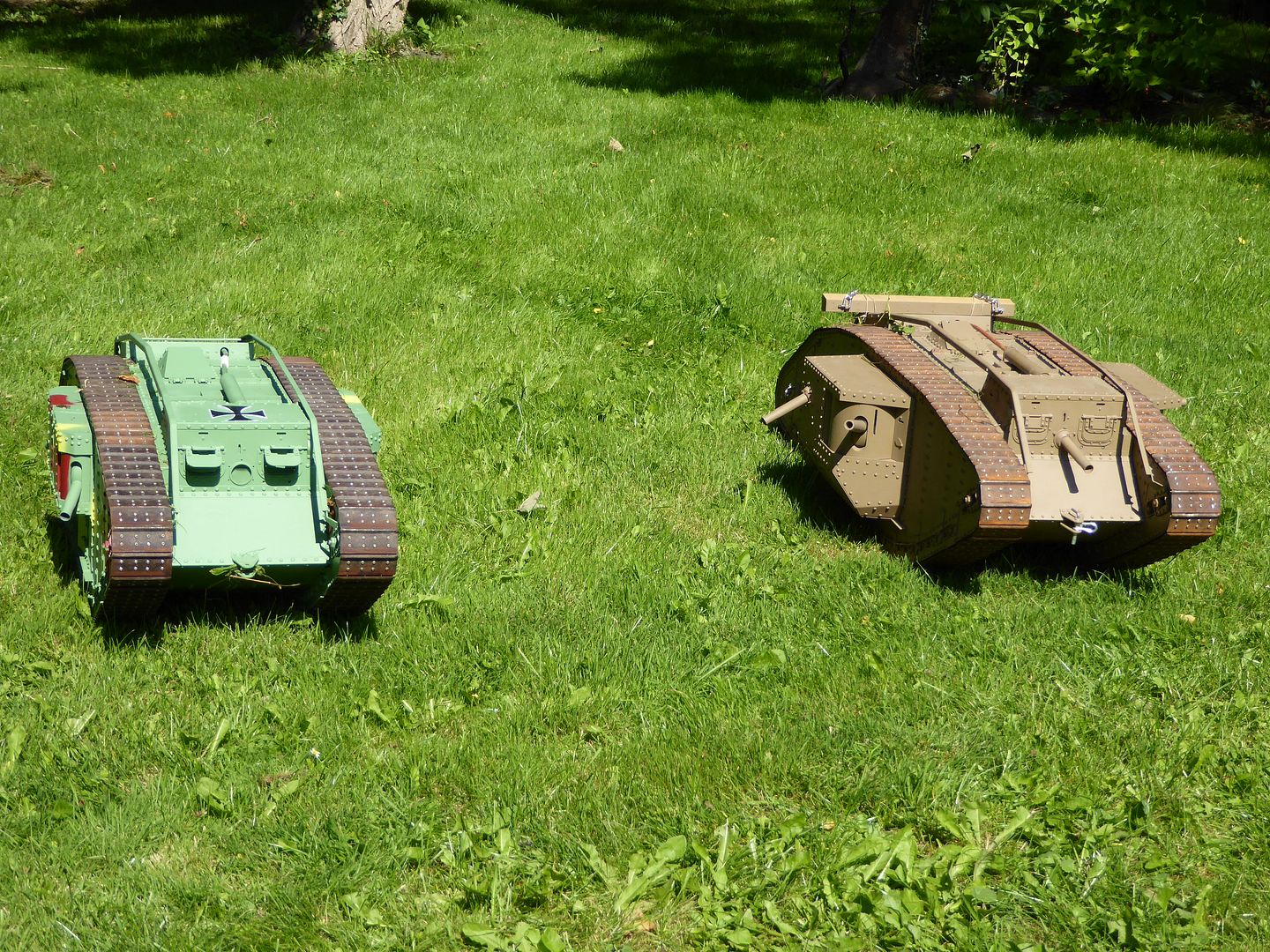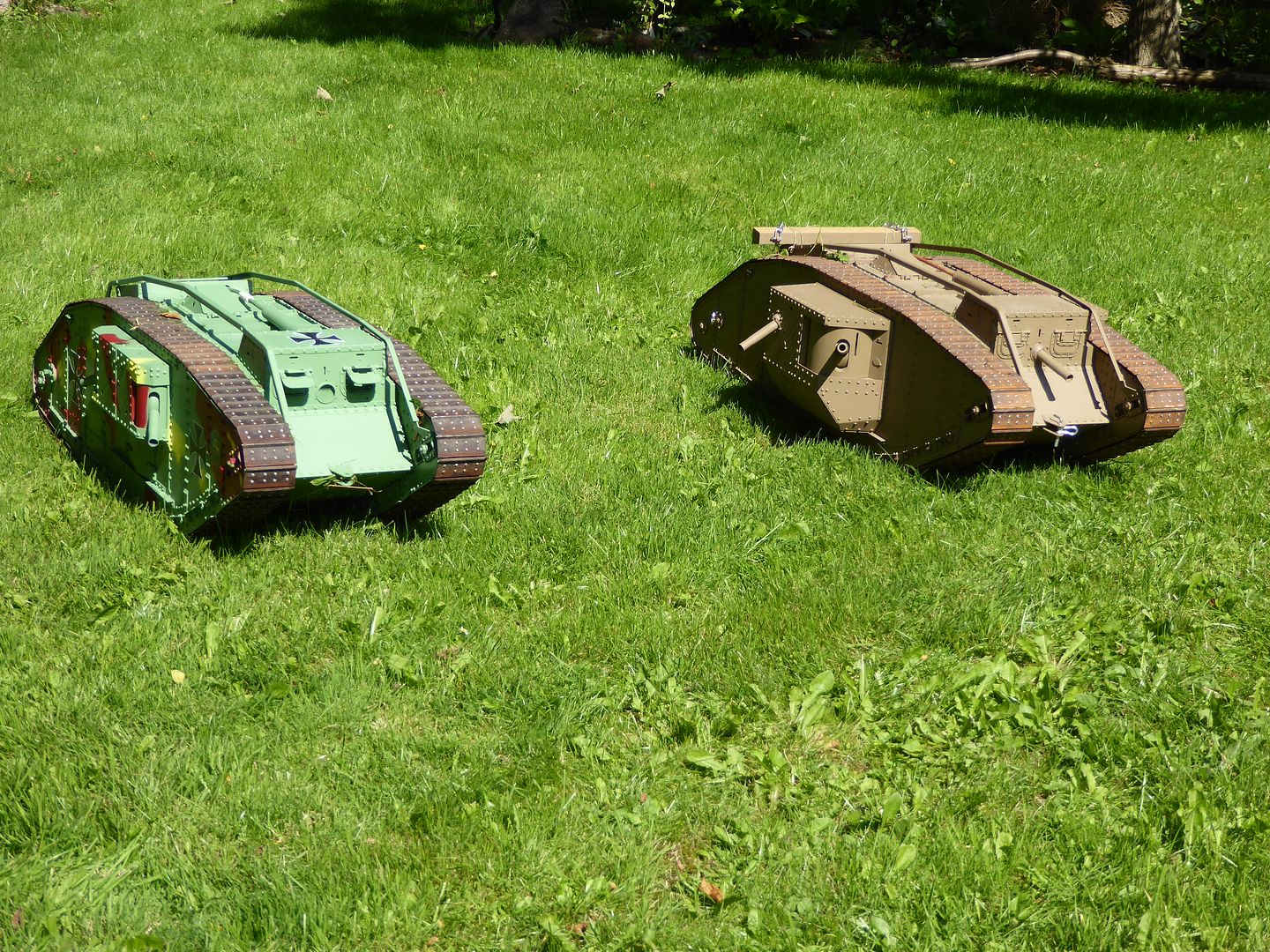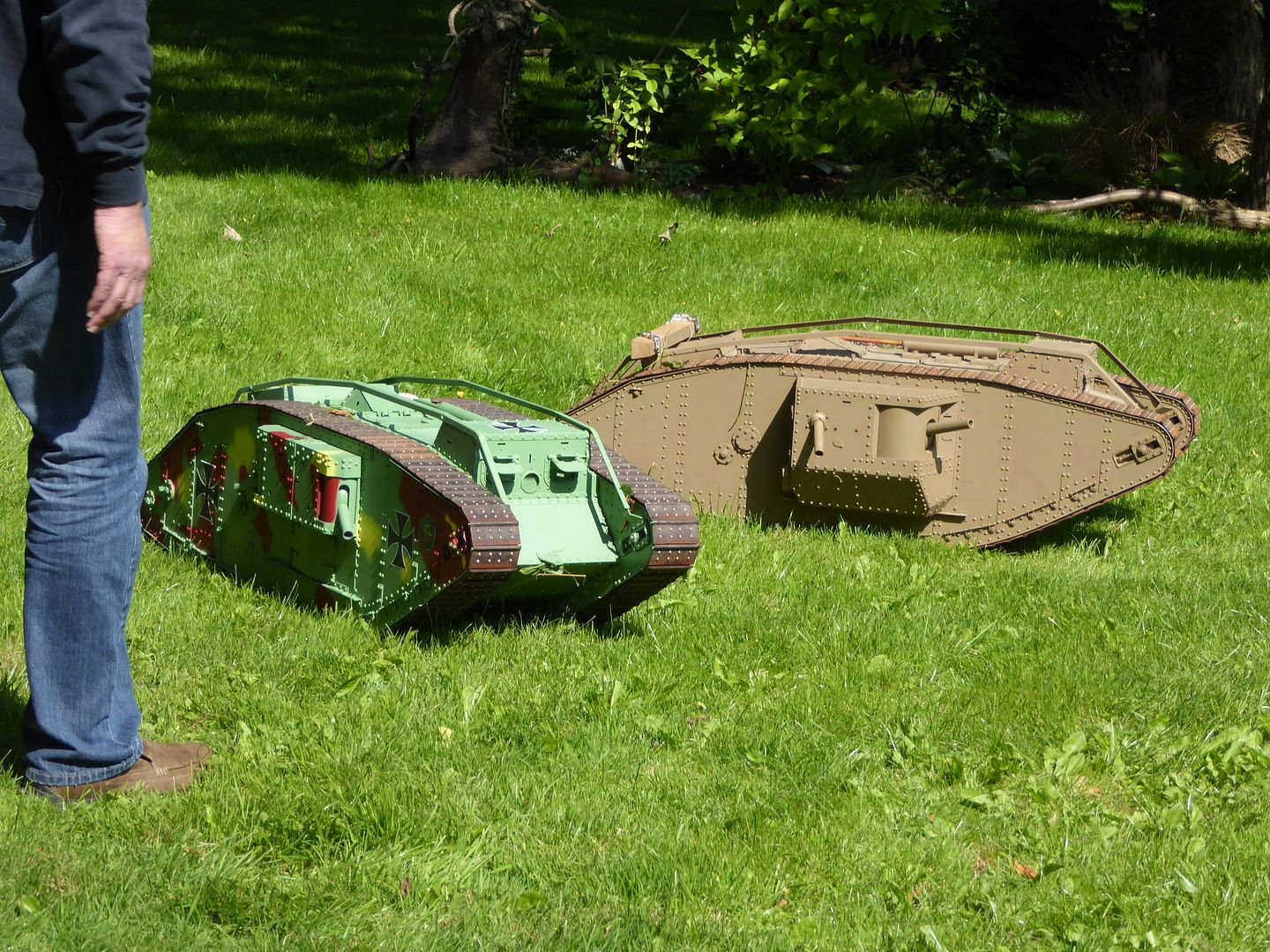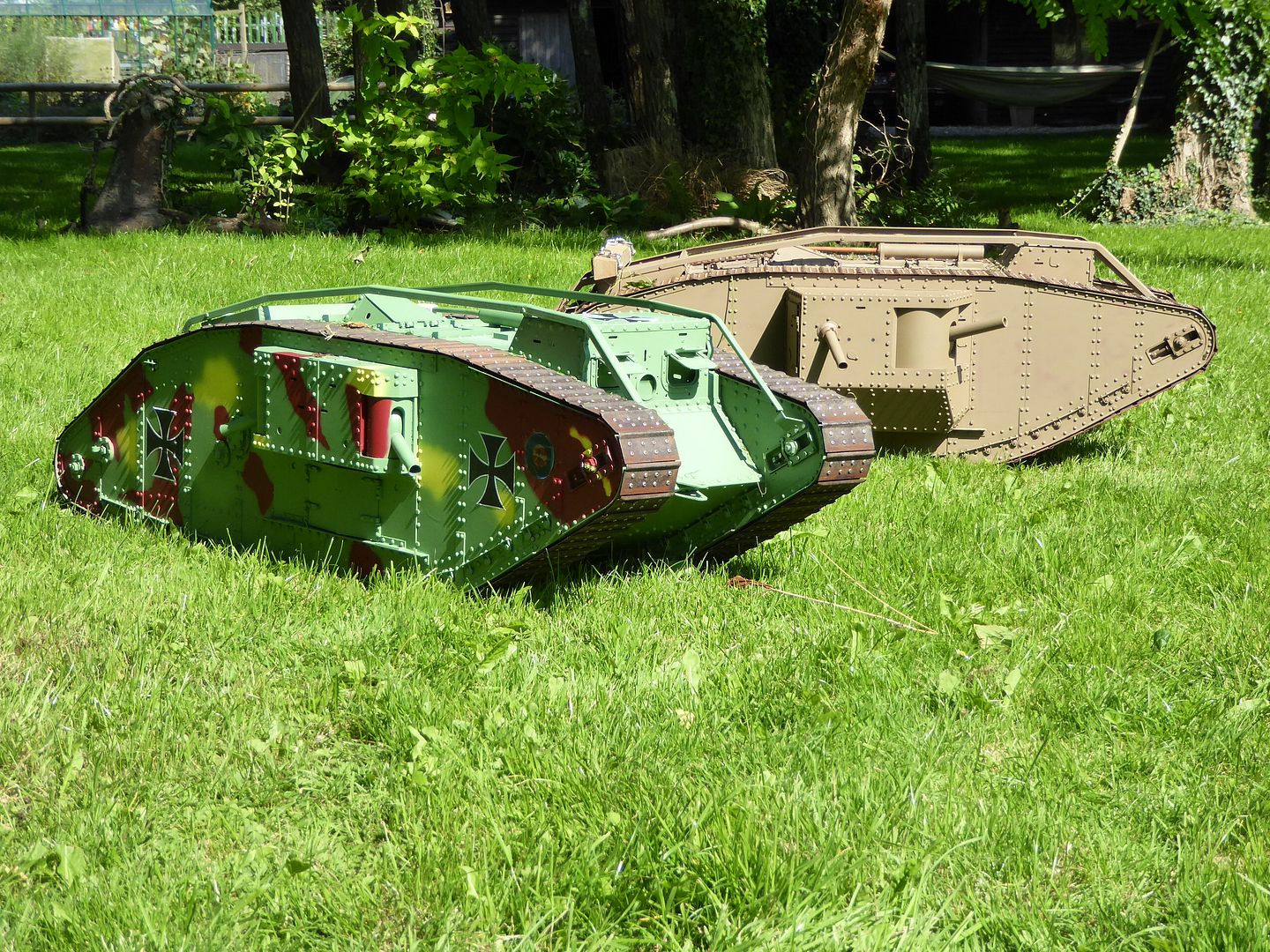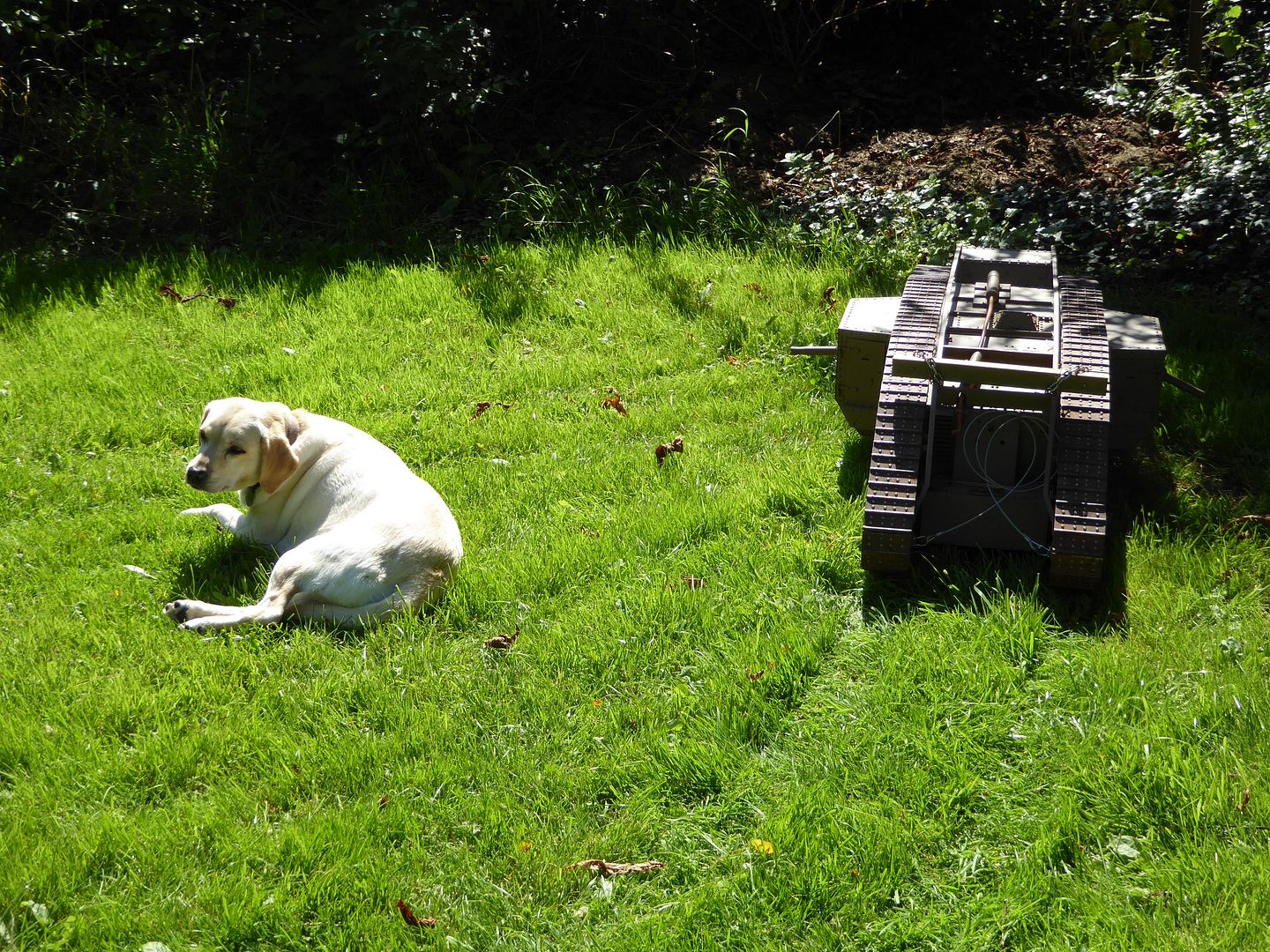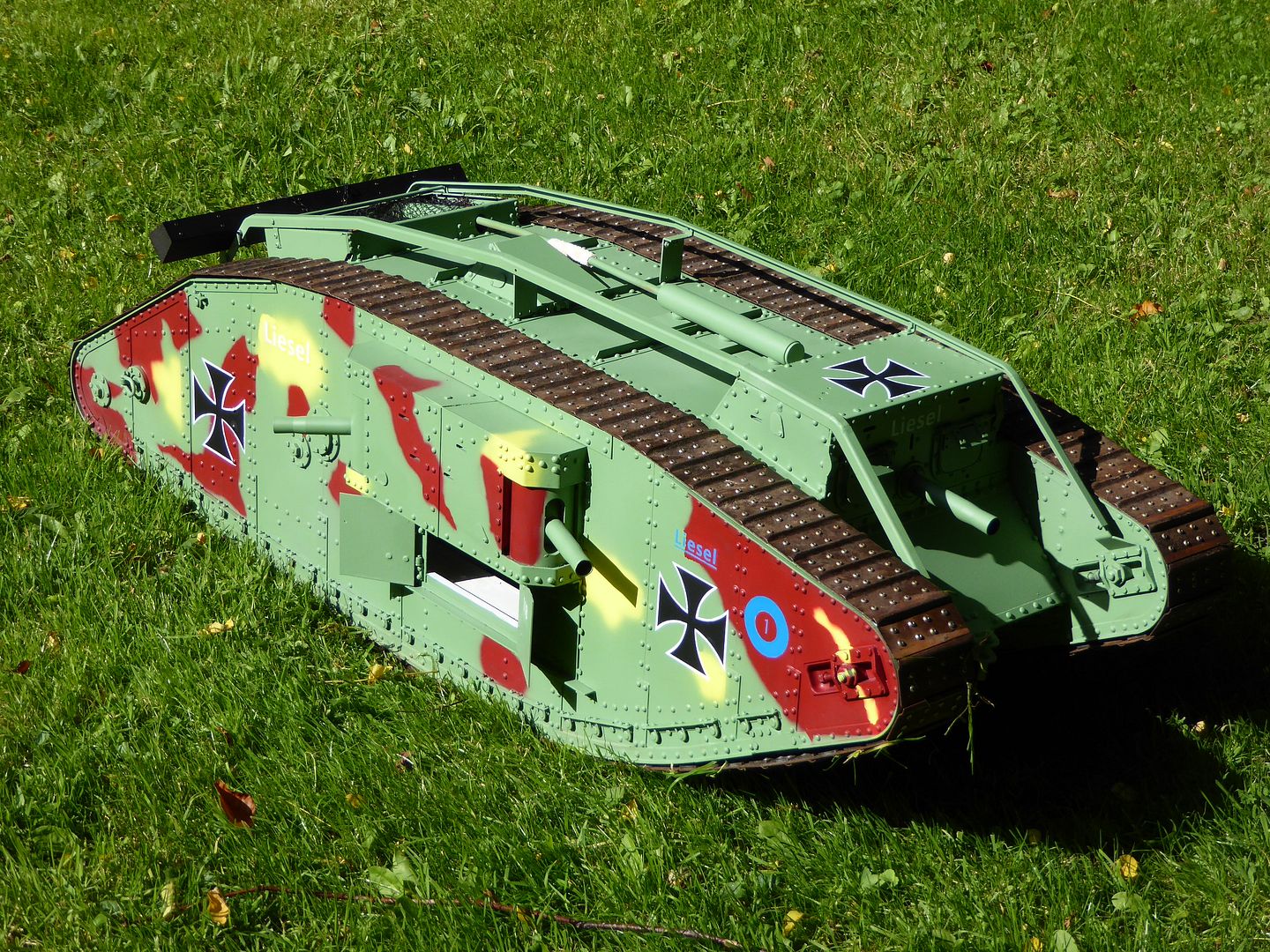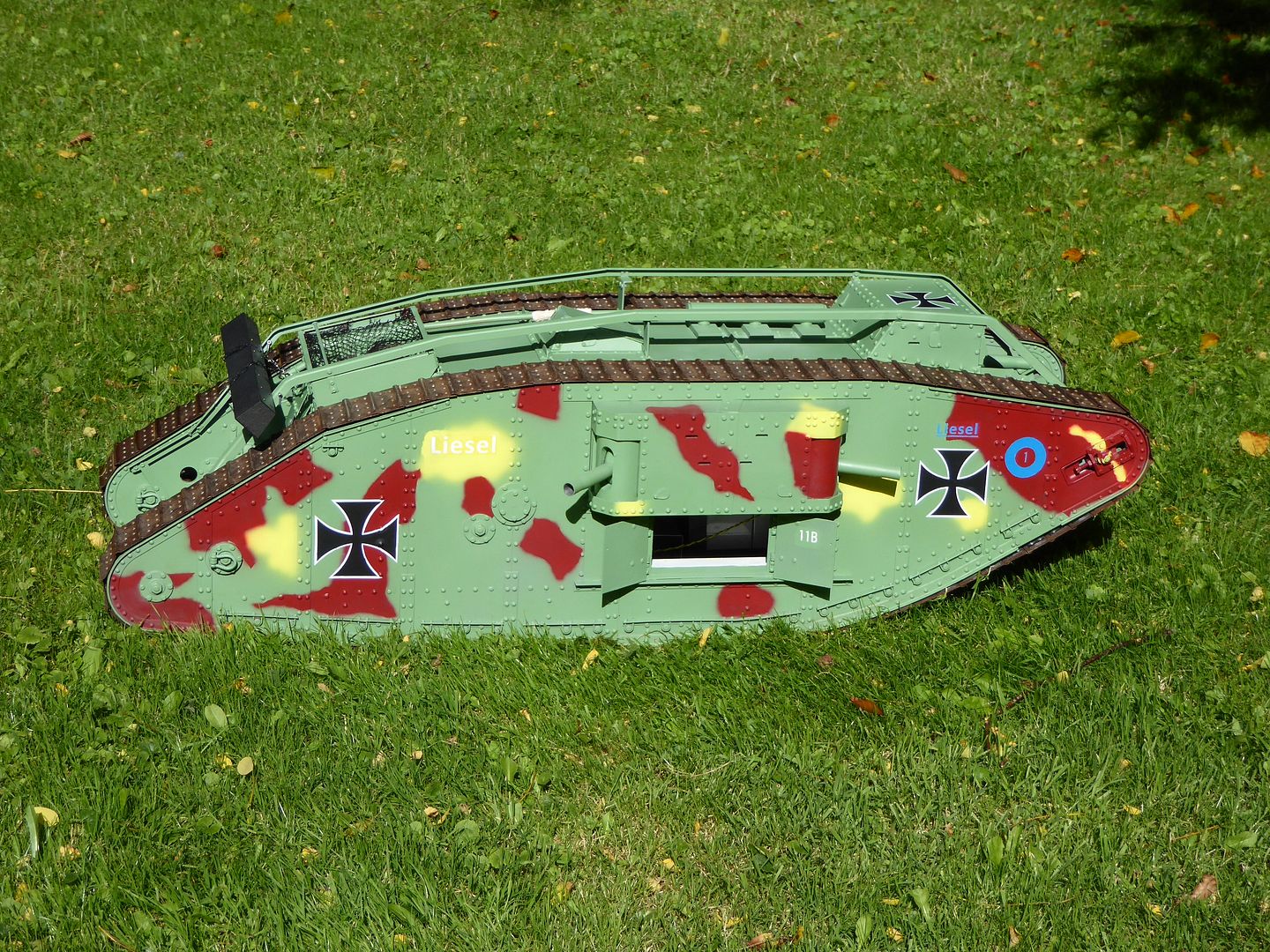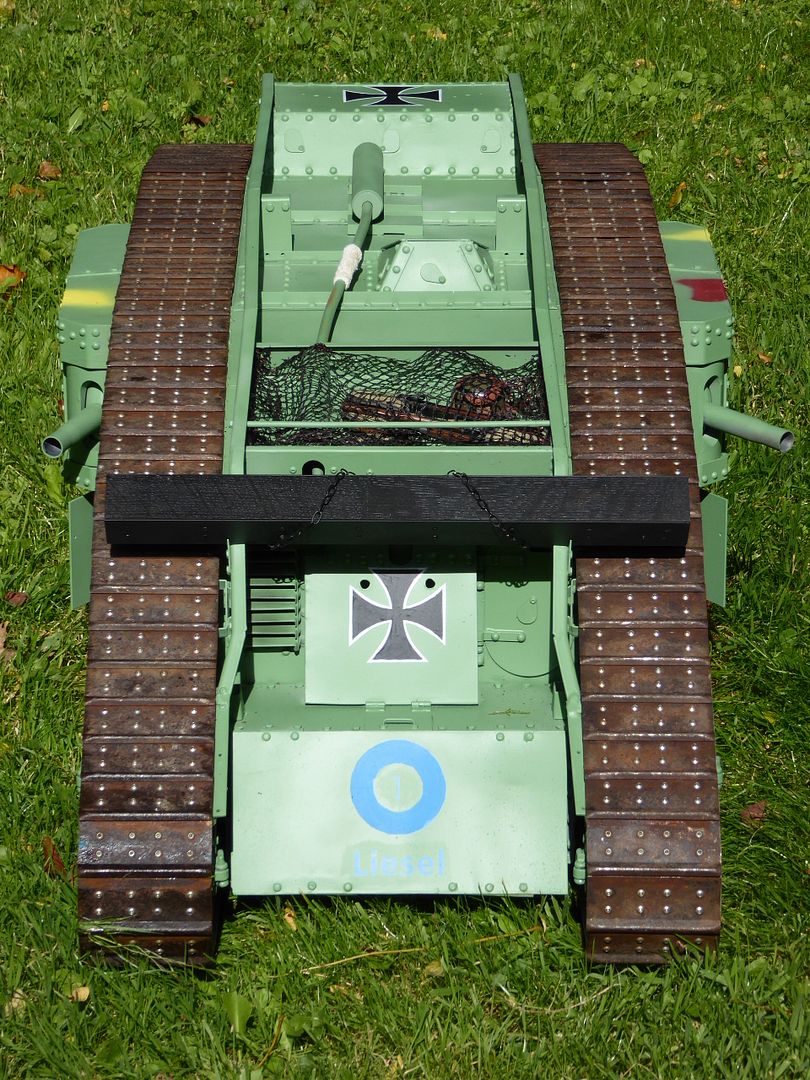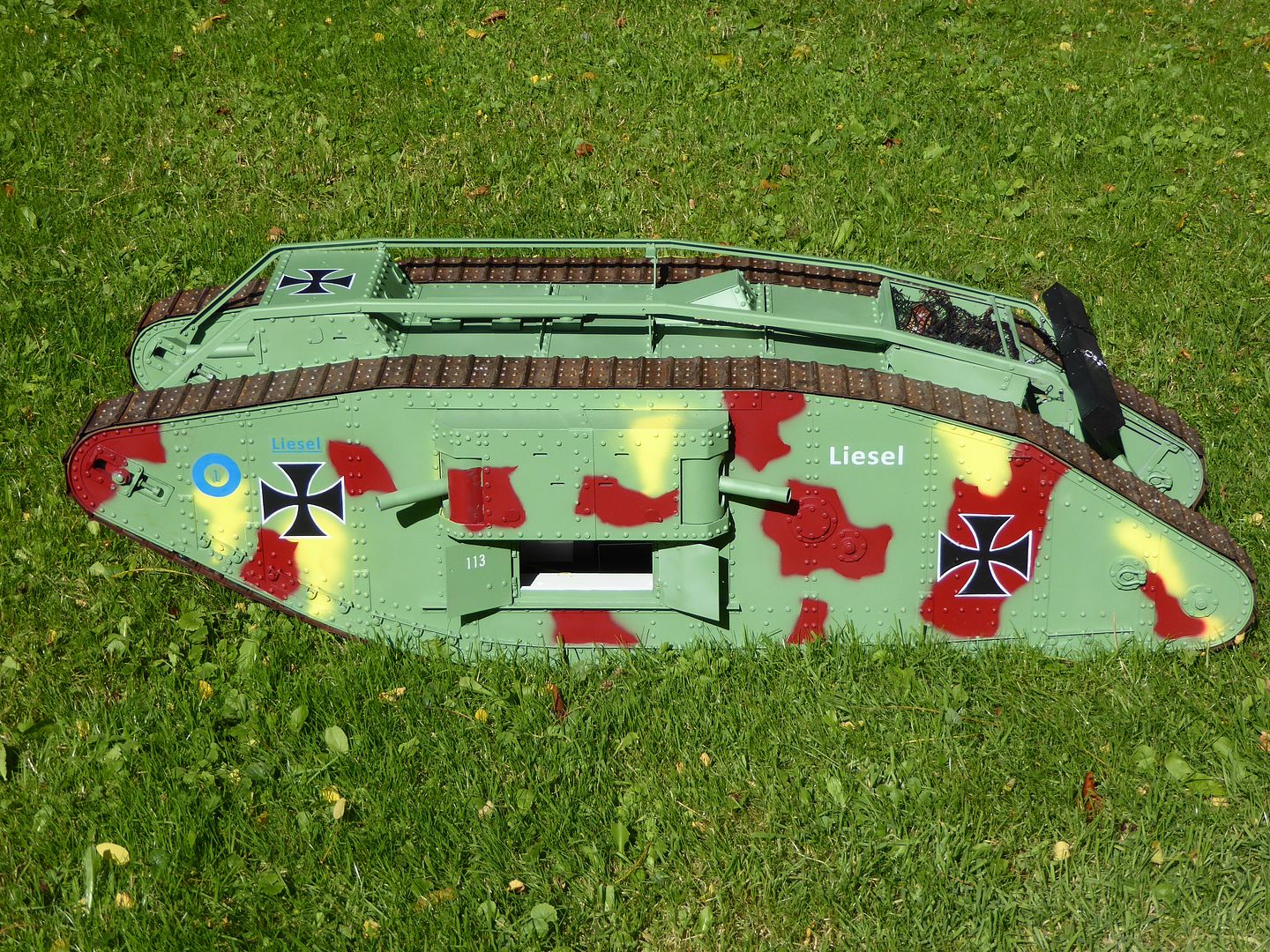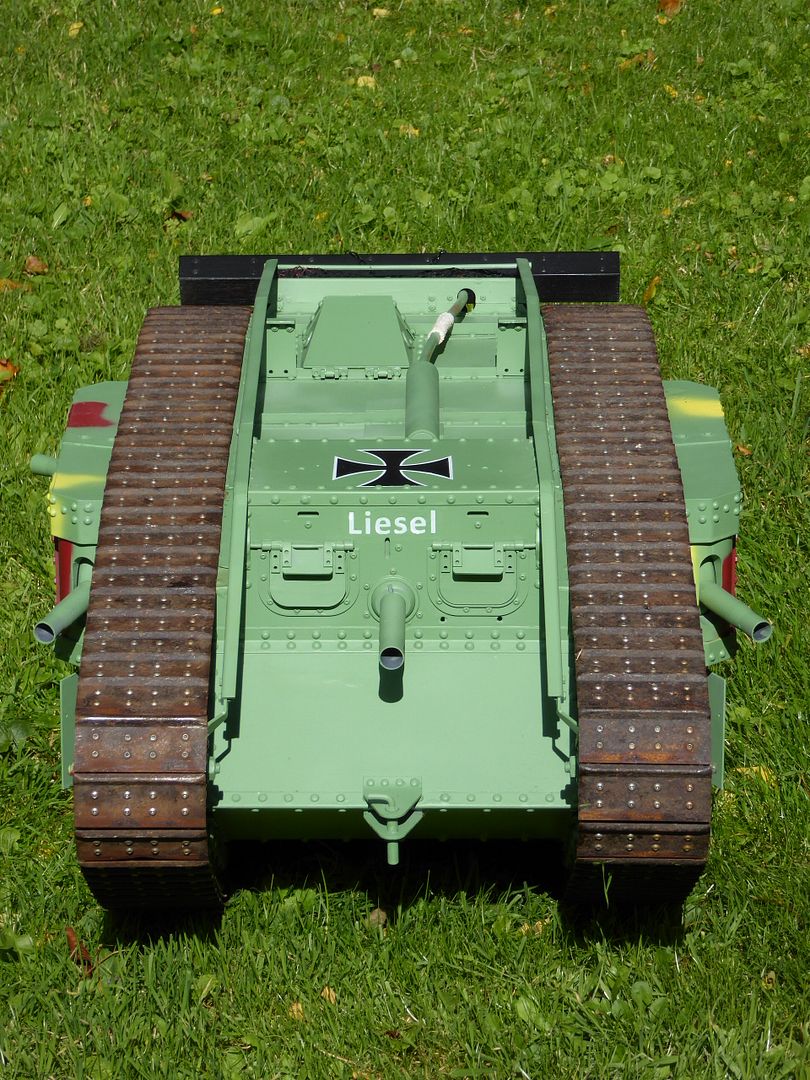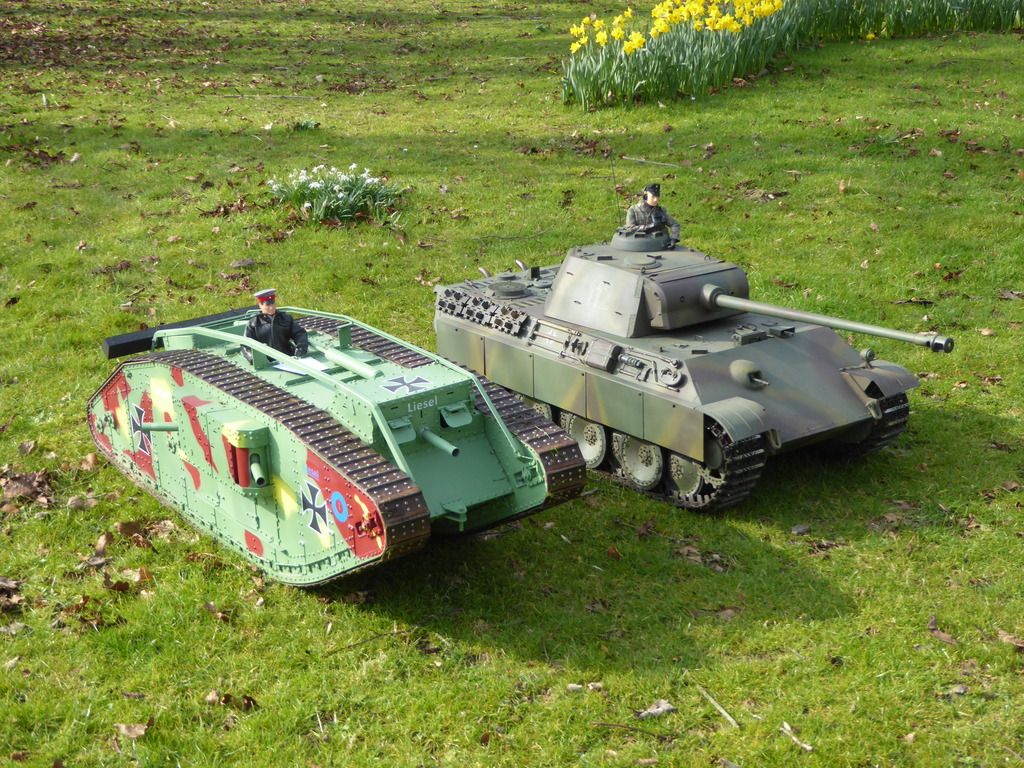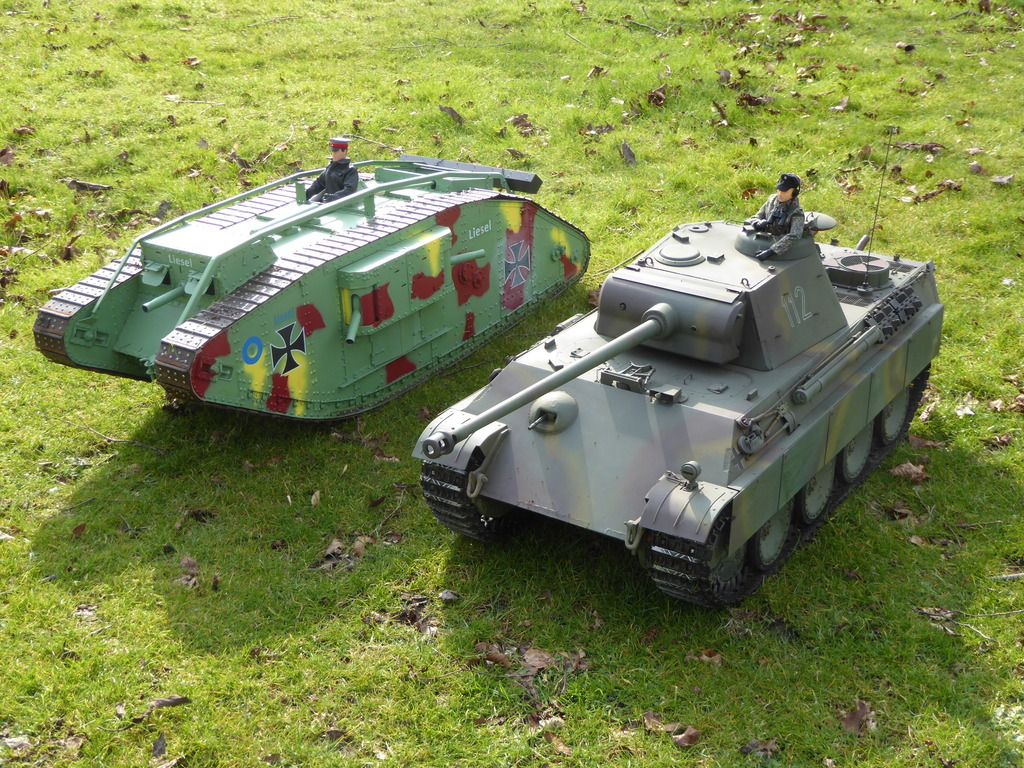Build time (to date): 217.5 hours
Last week was spent painting (thankfully the weather was a lot better than it is now !) with the vital assistance of my friend Mike, who is an airbrush artist who normally paints motorbike tanks. This challenge certainly intrigued him !
After preparation and an all-over coat of Reseda Green (RAL 6011) (actually several coats, plus clear seal), we spent a good day just poring over my collection of Liesel pictures and postcards, which are all B&W, mostly grainy or worn (except for those magically enhanced by another friend, John, who is a retired Professor of Photography), and all the best part of 100 years old. We finally agreed on the difference between the dark, light, and very light shapes, the shadows and reflections which could be ignored, and allowed for post-War weathering. So that gave us some shapes to paint, which Mike masked up. Then the airbrushes came out. This was all a complete mystery to me, and I've learnt a lot. After the colours were applied (based on the advice of Rainer Strasheim in Germany, who is the World (and possibly only) Authority on WW1 Beutepanzers) the whole tank was given several coats of clear varnish for protection, with a final light spray of a flat matt varnish to dull everything down.
And, today, I've finally started to put some markings on Liesel, starting with the Iron Crosses of Imperial Germany. Decal making is, again, something I've never done before, but is relatively straightforward and the results are certainly impressive. Again, this was preceded by lots of study to determine size, shape, font, colour and position. Unit and name markings will be done in the next few days when the right decal paper has arrived.
Despite all the help and advice, though, the final choices have been mine, and I accept full responsibility for the outcome, which I hope is as historically accurate as possible for such an obscure subject. I'm as confident as I can be about the colours and their distribution. I haven't found any solid evidence that Abt. 14 used Brown Red (RAL 3011) and Lemon Yellow (RAL 1012) anywhere else but the sides of their tanks, which is why the front, roof and rear are just in the green basecoat. And I'm spared the effort of weathering, as Liesel only had an operational life of 5 days and was described as 'remarkably clean'. That's my justification, anyway !
Some of you may think that the result is quite garish, and contrary to the normal ethos of camouflage. But, in this case, the absolute opposite was intended. As the British and Germans were now using the same tanks, they needed to stand out from each other. The Germans went for lurid colours (using up stocks of captured railway paint - try to imagine the Orient Express !), and obvious national markings, whereas the British used red and white stripes on the front horns (and sometimes the roof as well).
So now, the Big Reveal -
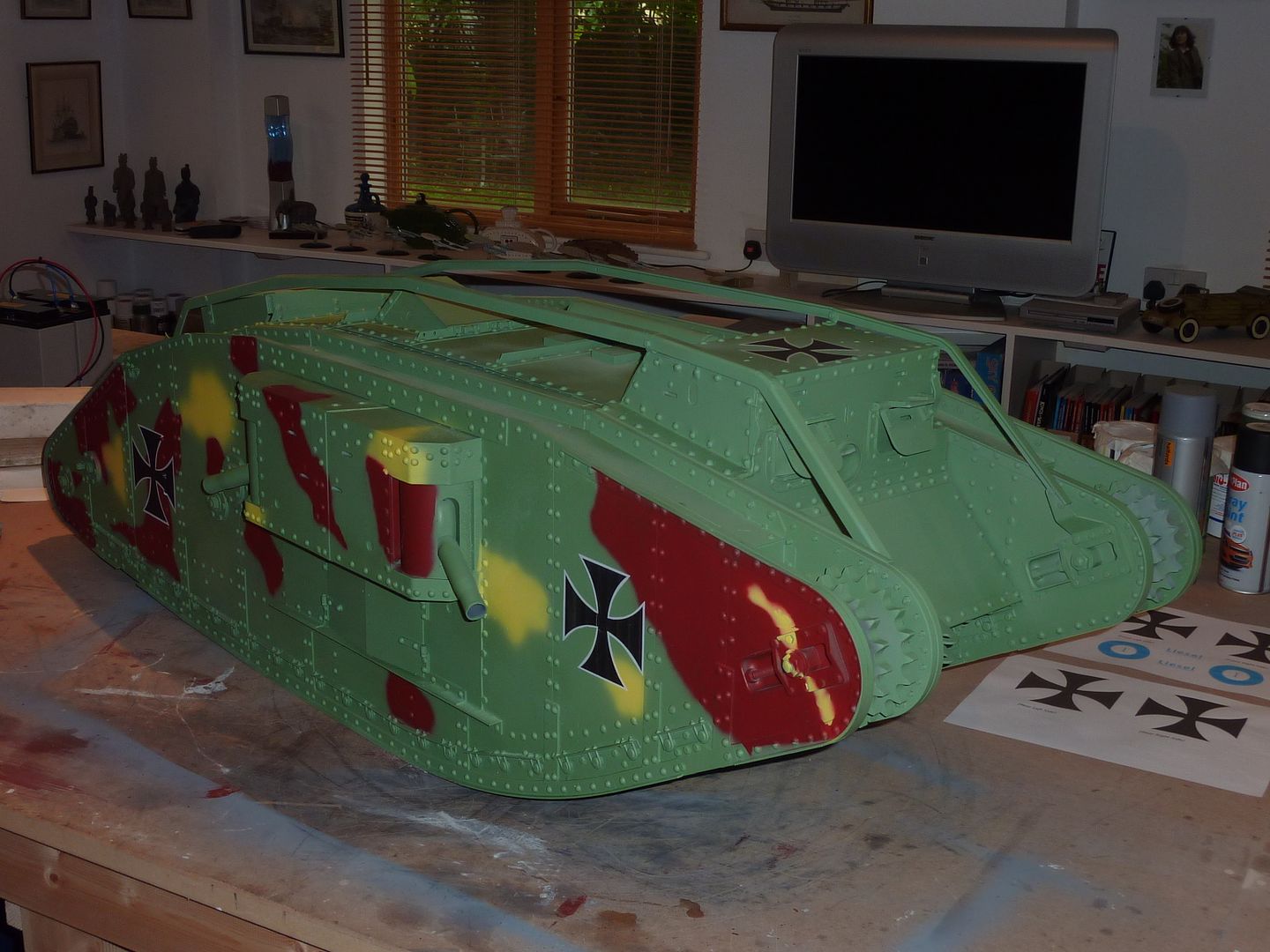
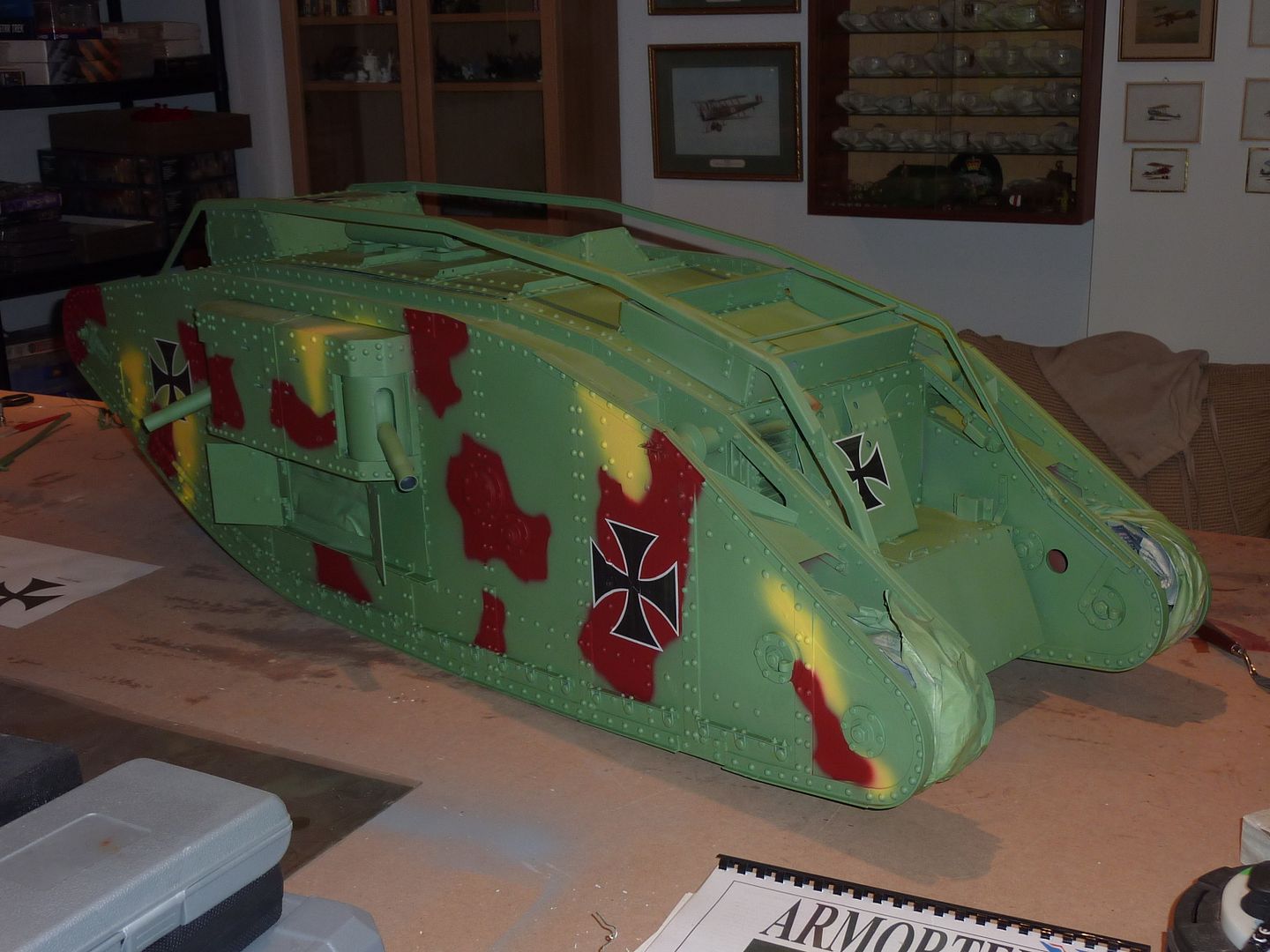
I'm absolutely delighted with the results so far - I never dared to dream that she'd look this good ! I'm biased, of course - your opinions would be of greater value. I'm really looking forward to Armortek Day, when she'll be finished (
OK - for the time being, Steve ! 
) and proudly on display.
Of course, sometime this week, I've still got to fit the tracks .......

All the best,
Chris

